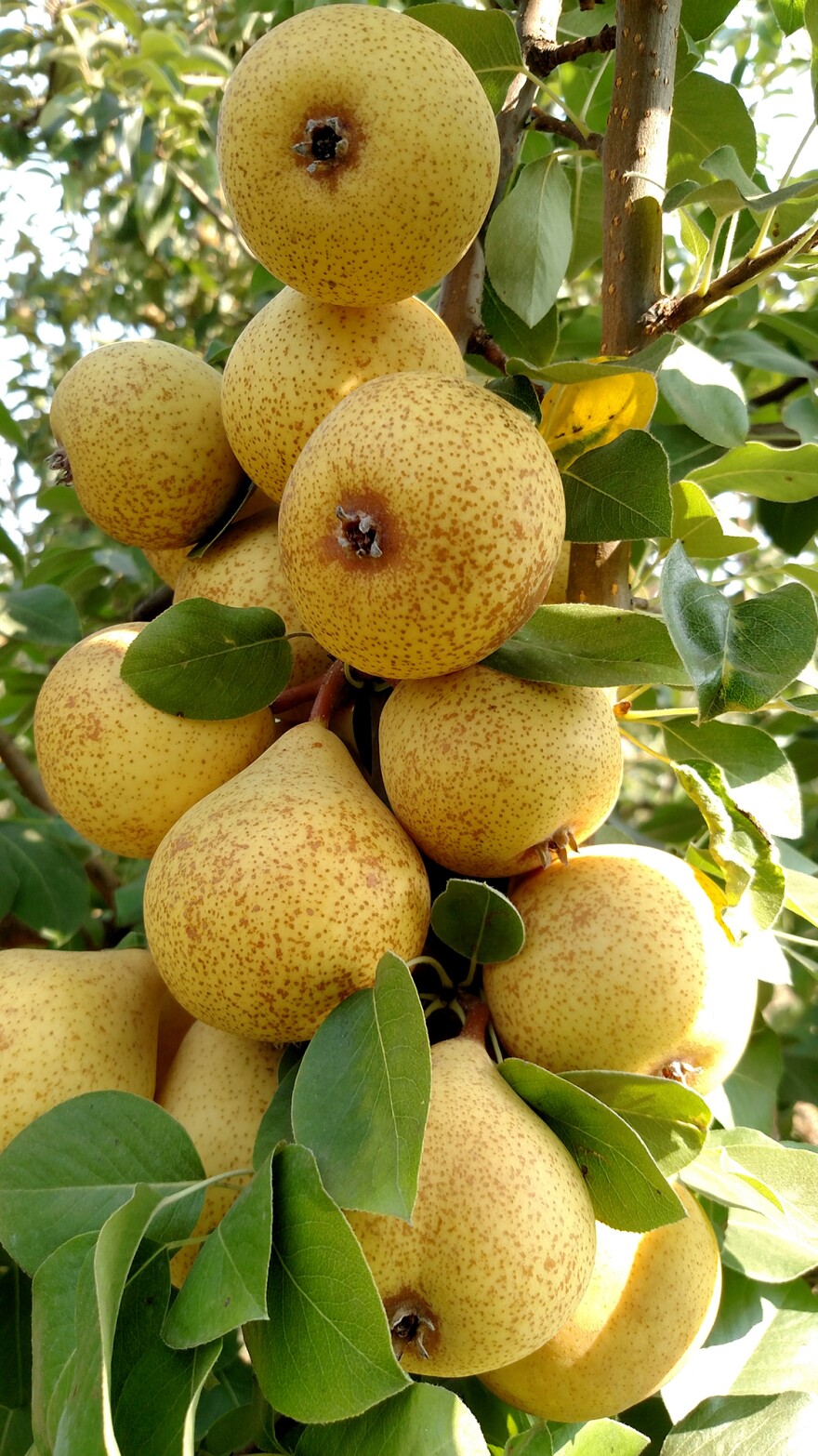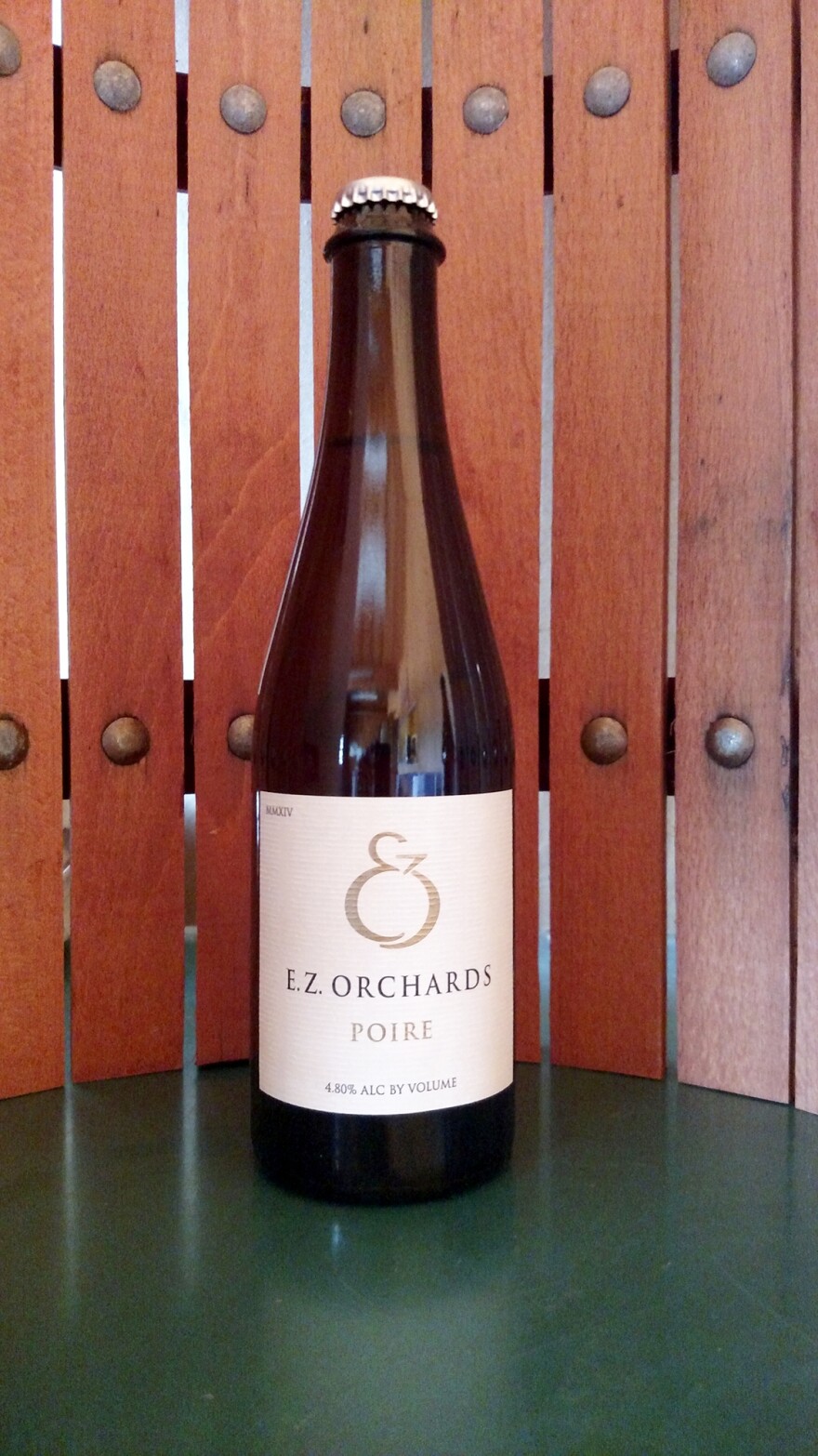It was a cool morning in the spring of 2004 when Charles McGonegal, owner of AEppeltreow Winery in Burlington, Wis., bit into his first "perry" pear. Crunching into the tough, tannin-suffused fruit, he was smacked with such astringency that he instantly spit it out, letting the juice dribble down his chin. "Later that day, my lips were peeling and my throat was sore," he recalls. "There's a reason why medieval folks thought perry pears were poisonous — they're full of acids and tannins. They are not for eating. But when you turn them into cider they are beautiful."
McGonegal is not alone in his love of perry (the formal name for classic pear cider). Perry pears' acids and tannins, when fermented by the wild yeasts growing on their skins, produce a light, delicious beverage that rivals apple cider, but is sweeter. The drink has long been revered in England, South Wales and Normandy, France, and was a favorite of Napoleon's.
Now the beginning of a U.S. perry revival may be underway, lofted on the wings of the craft cider craze. Hard apple cider — with its typical alcohol content of 4 to 8 percent — is the fastest-growing segment of the U.S. alcohol market. Greg Peck, an assistant professor of horticulture at Virginia Polytechnic Institute and State University who specializes in apple industry research, noted that cider production has grown from 6.4 million gallons produced in 2007 to 54 million gallons in 2014. And several U.S. craft cider makers are adding perry to their offerings.

"There's been a crazy momentum as cider and perry have gained in popularity," says Eric West, who produces a weekly newsletter about the cider industry and oversees the annual Great Lakes International Cider and Perry Competition (GLINTCAP). He takes care to note that "traditional perry is not the same as pear cider, which is often apple cider that has pear flavoring added to it, and may be what comes to mind for most people when they hear about perry. A true perry is made from pears alone and has a light, refreshing sweetness."
Perry pears are smaller than culinary or dessert pears. As with apple cider, the fruit is picked, crushed and pressed to extract juice, which is then fermented. However, unlike apples, all pears contain a sugar alcohol called sorbitol that yeasts cannot metabolize. A completely fermented perry, therefore, has a residual sweetness missing from a dry apple cider.
Perry pears are descendants of wild hybrids that stretch back to Roman times. The trees can produce fruit for as long as 250 years, with huge canopies — the most famous, a 19th century Holme Lacy Perry tree, covered a quarter acre and produced nearly 2,000 gallons of perry in a single year. But the trees can take a long time to grow — "plant pears for your heirs" is an old English saying.
I find true perry to be more interesting than apple cider. It's a more complex beverage, with higher aromatics. Making craft cider and perry is akin to winemaking. You get one chance at a vintage every year.
To shorten the time, McGonegal grafted perry pear stock onto 150 semidwarf pear trees, which grow to about 16 feet (a mature perry tree may grow as tall as 150 feet). Within a few years he had enough perry pears to produce 50 to 150 gallons a year. It wasn't easy to obtain those perry pears, however. One variety he imported from England took a full year for the USDA to approve. Other cuttings were obtained from the USDA's National Clonal Germplasm Repository in Corvallis, Ore.
At Blackduck Cidery in Ovid, N.Y., owners John Reynolds and Shannon O'Connor use perry pears from trees they planted 17 years ago. "Pears are very slow-growing trees," says Reynolds, "and some of them didn't fruit for 11 years. We have all these European varieties: Barnet, Butt, Yellow Huffcap, Hendrik's Huffcap, Normanischen Ciderbirne, Gin, Brandy. These true perry pears add different flavors, acids and tannins that are the signature of our beverage." This year will be their third vintage of both craft apple cider and perry; last year they produced 2,400 perry bottles of 750 ml each. Says Reynolds, "I find true perry to be more interesting than apple cider. It's a more complex beverage, with higher aromatics. Making craft cider and perry is akin to winemaking. You get one chance at a vintage every year."

But you can still create a complex, interesting perry cider even without perry pears, says Kevin Zielinksi of E.Z. Orchards Cidre in Salem, Ore. While he waits for his perry pear trees to mature, he has been crafting his own version of perry from dessert pears. "I let the pears hang on the tree 10 days or two weeks past the time for picking and eating," he says. "That extra ripening time makes more sugars and aromatics available for the fermentation. I feel as if these mature fruits reveal hidden flavors we don't usually associate with a pear."
Zielinski uses Bosc, Forelle (a small, sweet pear with a cinnamon-spice flavor), Taylors Gold (a New Zealand variety with distinct aromatics) and other cultivars. "Our perry is a refreshingly approachable beverage that I like as a brunch item instead of white wine."
Perry can be made still or bubbly. To preserve the bubbles one simply bottles it near the end of fermentation. Natural carbonation bubbles are tiny and fine and slowly unfurl the flavors and natural chemical compounds that give perry its signature mouthfeel and taste, according to Reynolds of BlackDuck Cidery.
"I love the delicate nature and round mouthfeel of perry," says Steven Baird, owner of two popular bars featuring craft liquors in Brooklyn, N.Y. — Cardiff Giant and The Owl Farm. "I always try to have a perry in stock at both of my bars. The best American perries are wonderfully complex and nuanced and rival those of Europe."
Jill Neimark is an Atlanta-based writer whose work has been featured in Discover, Scientific American, Science, Nautilus, Aeon, Psychology Today and The New York Times.
Copyright 2021 NPR. To see more, visit https://www.npr.org.

